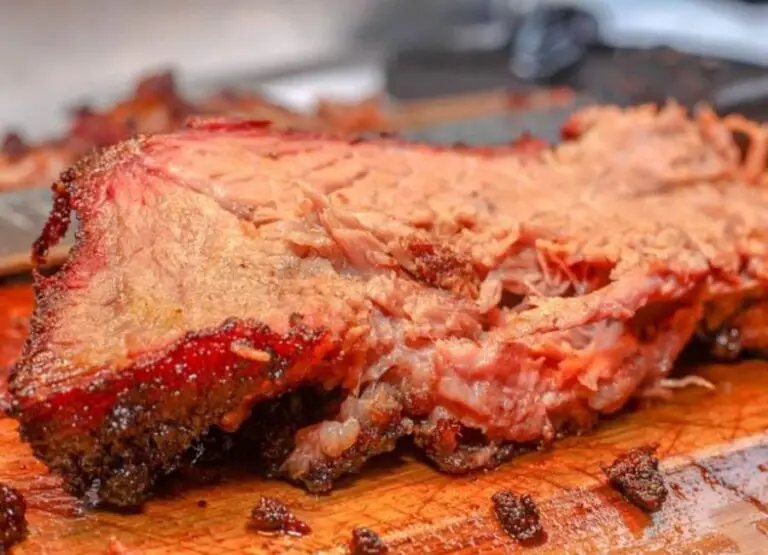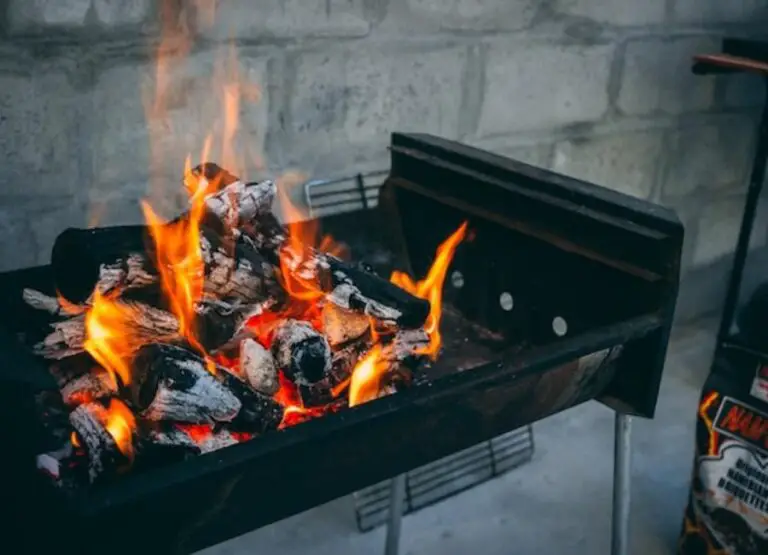Cooking Raw Meat In Microwave [Explained]
Microwaving raw meat has long been a contentious issue; although some argue it is a simple and practical way to prepare, others think it is dangerous and results in undercooked meat.
But with the appropriate methods and tools, cooking raw meat in a microwave may be a secure and efficient way to make delectable meals.
In this article, we’ll examine the benefits and drawbacks of microwave cooking raw meat as well as offer advice on how to achieve the best results.
This thorough approach will enable you to consistently produce flawlessly cooked meat, regardless of whether you are an experienced cook or are just learning.
Cooking Raw Meat In The Microwave
Raw meat may be microwaved safely, but it must be carefully checked to make sure it is properly cooked.
When thawing meat for cooking, be sure to do it in the refrigerator rather than on the counter.
A meat thermometer should also be used to monitor the temperature of the meat to make sure it has achieved a safe internal temperature of at least 145 °F (63 °C).
To guarantee that the meat is cooked evenly, it is also crucial to rotate the meat halfway through the cooking procedure and to cover it with a microwave-safe cover.
Additionally, let the meat sit for three minutes before serving.
Importance of cooking raw meat properly
Raw meat must be carefully cooked, since it may contain dangerous pathogens like Salmonella and E. coli.
Meat may be safely consumed since these germs will be eliminated when it is cooked to the proper temperature.
Additionally, because some meat components may take longer to cook than others, it is crucial to ensure that the entire piece of meat is fully cooked.
In addition to preserving taste and texture, properly prepared meat is also more palatable.
Proper Techniques for Cooking Raw Meat in Microwave
These include:
Choosing the right type of meat
It’s crucial to pick pieces of meat that can be cooked in the microwave when preparing raw meat.
The finest types of meat to cook in the microwave are thin slices like beef tenderloin or chicken breasts since they cook fast and evenly.
In the microwave, thicker meat slices may not cook equally, resulting in undercooked or charred portions.
Proper preparation and seasoning
It’s crucial to thoroughly prepare the meat before you microwave fresh meat.
This entails taking the meat out of any packaging, wiping it dry using paper towels, and seasoning it as desired.
By doing this, you can make sure that the meat cooks uniformly and that the flavors are adequately absorbed.
Microwaving guidelines
When cooking in a microwave, it’s crucial to follow the manufacturer’s instructions.
Use microwave-safe containers, such as glass or ceramic plates, and stay away from using metal utensils or containers since they might catch fire in the microwave.
To achieve even cooking, it’s also crucial to stir the meat occasionally while it’s cooking.
Recommended time and power levels
The kind of meat and the thickness of the cut will determine the required cooking time and power levels for raw meat in the microwave.
In general, it takes 4-6 minutes to cook beef tenderloin and chicken breasts on high power for each half-inch of thickness.
It might be necessary to microwave thicker pieces for a longer amount of time at a lower power.
Use a meat thermometer to check that the interior temperature of the meat has reached a safe level of at least 165 °F in order to kill any potentially hazardous germs.
Step-by-step instructions for cooking raw meat in the microwave
Here are the steps to cook raw meat in a microwave:
Prepare the meat: To prepare the meat, take it out of the container and put it on a dish that can go in the microwave. Add salt, pepper, or other spices to the meat as desired.
Cover the meat: To trap steam and aid in cooking the meat evenly, cover the meat with a microwave-safe lid or wrap the plate in microwave-safe plastic wrap.
Cook the meat: Microwave the covered dish of meat for 4–6 minutes, each half pound of beef, on high power. To determine the meat’s interior temperature, use a meat thermometer.
At least 145 °F (63 °C) should be reached for poultry, 160 °F (71 °C) for ground beef, and 145 °F (63 °C) for steaks and roasts of beef, pig, and lamb.
Rest the meat: Remove the cooked meat from the microwave and let it stand for three to five minutes before serving. This enables the fluids to permeate the meat uniformly.
Note: Depending on the meat’s thickness and the microwave’s wattage, cooking times may change. Regularly check the meat’s internal temperature and modify the cooking time as necessary.
Factors that affect the safety of cooking raw meat in the microwave
The following are some factors that affect the safety of cooking raw meat in the microwave:
- Cooking time and power: Cooking raw meat with low power for prolonged periods of time might undercook it and pose a risk to food safety. Dry meat and overcooking are both possible outcomes of using high power for brief periods of time.
- Meat type: To guarantee safe and effective cooking, various cuts and thicknesses of meat require various cooking periods and power levels.
- Size and shape of the meat: The meat’s size and form can affect how evenly it cooks in the microwave, with thicker regions needing more time to cook to safe internal temperatures.
- Temperature and moisture content: Moisture content and temperature of the meat before cooking can have an impact on the cooking process and the acceptable internal temperature.
- The wattage of the microwave: Cooking times and outcomes can be affected by the microwave’s wattage.
- Use of microwave-safe plates: Using microwave-safe dishes can help to guarantee proper cooking and prevent contamination.
Safety concerns about cooking raw meat in a microwave
Cooking raw meat in a microwave can lead to food safety concerns if not done properly. These include:
- Uneven cooking: Food cooked in a microwave oven may have undercooked or raw areas that might host dangerous bacteria.
- Bacterial growth: Meat can get contaminated with bacteria if it is not cooked to a high enough temperature for a long enough period of time.
- Cross-contamination: If raw meat fluids spill while cooking, they may contaminate other foods, utensils, and surfaces.
- Reduced nutritional quality: If food is overdone when microwaved, nutrients may be lost.
- Avoid thawing: Never defrost raw meat in the microwave, since it might leave warm patches that can encourage the spread of germs. As an alternative, defrost the meat in the microwave, the refrigerator, or under running water.
Advantages of Cooking Raw Meat in Microwave
The following are some advantages of cooking raw meat in the microwave:
- Quick Cooking Time: Microwaving raw meat quickly turns it into cooked meat, making it a practical choice for people on the go.
- Easy to Use: Raw meat may easily be cooked in a microwave since they are easy to use and don’t require any specialized knowledge or abilities.
- Energy-efficient: Microwaving requires less energy than other cooking techniques, making it a greener choice.
- Retains Moisture: Microwaving can help raw meat maintain moisture, making the finished product more tender and juicy.
- Uniform Cooking: Meat will be properly cooked in the microwave without any undercooked or overdone spots thanks to its ability to cook food uniformly.
- Safe for Raw Meat: Microwaving raw meat is safe because it can produce temperatures that are high enough to kill germs and stop the spread of foodborne illnesses.
- Versatile: You can cook a variety of raw meats in the microwave, including chicken, beef, and pig.
- Simple Maintenance: Microwaves are a practical choice for cooking raw meat since they are simple to maintain and clean.
Learn more about the disadvantages of eating too much meat.
Disadvantages of Cooking Raw Meat in Microwave
The following are some disadvantages of cooking raw meat in the microwave:
- Nutrient Loss: Microwaving raw meat can result in the loss of vital vitamins and minerals.
- Uneven Cooking: Because microwaves cook food from the outside in, some portions may come out raw while others may be overdone.
- Dryness: Food, particularly meat, has the propensity to get dry in the microwave, which gives it a harsh and unpleasant feel.
- Lack of Taste: Microwave cooking raw meat frequently produces a lack of flavor since it prevents the meat from caramelizing and developing rich, flavorful flavors.
- Safety Concerns: Microwaving raw meat might be risky because it sometimes fails to eradicate hazardous pathogens like salmonella and E. coli.
- Insufficient Browning: Browning and searing, which are crucial for taste development, require high heat, which a microwave cannot produce.
- Reduced Shelf Life: Microwaving raw meat can cause nutrients to be lost and germs to potentially proliferate, which can shorten the meat’s shelf life.
- Limited Uses: Not all varieties of raw meat can be cooked in the microwave, and it is not the best cooking method for meals that need lengthy cooking durations or complicated flavor development.
Learn more about cooking raw chicken in the microwave.
Frequently Asked Question
Are there any possible risks to microwave-cooking raw meat?
Yes, there are some potential risks involved with the microwave cooking of raw meat.
The internal temperature of the meat must reach at least 145 degrees Fahrenheit (63 degrees Celsius), or there is a risk of bacteria remaining. Microwaves can make the meat cook unevenly.
Is it possible to microwave-reheat cooked meat?
The answer is that cooked beef can be reheated in a microwave.
But before eating, make sure the cooked beef has reached an internal temperature of at least 165 degrees Fahrenheit (74 degrees Celsius).
Additionally, using a food thermometer and reheating little amounts of meat at a time are the recommended practices for meat.
Is microwave cooking of raw meat safe?
Yes, raw meat may be cooked in a microwave provided the heating time and temperature are properly watched. But it’s crucial to check if the raw meat’s internal temperature is high enough to eradicate any dangerous microorganisms.
What is the optimum internal beef temperature?
To effectively eliminate any possible pathogens, the interior temperature of most meats must reach at least 145 degrees Fahrenheit (63 degrees Celsius).
What are some recommendations for microwave-cooked raw meat?
Use a food thermometer to check the raw meat’s internal temperature and make sure it reaches at least 145 degrees Fahrenheit (63 degrees Celsius). Additionally, cook the meat on a microwave-safe dish, and use separate chopping boards for raw meat and vegetables.
How much time should be spent cooking raw meat in a microwave?
The amount of time needed to cook raw meat in a microwave depends on the size, thickness, and wattage of the device.
Generally, it is best to cook the meat in short intervals and to check the internal temperature with a food thermometer to ensure it is at least 145 degrees Fahrenheit (63 degrees Celsius).
Learn more about how to cook meat to avoid carcinogens.
Conclusion
In conclusion, if done correctly, heating raw beef in a microwave may be a quick and secure method to make a meal.
To ensure consistent cooking, it’s crucial to use a microwave-safe dish, check the meat’s internal temperature, and let it rest for a few minutes before serving.
With these pointers in mind, microwave-cooking raw beef may be a quick and simple solution for hectic weeknights or last-minute meal preparation.
Consider cooking raw beef in the microwave if you want to save time, lessen your environmental impact, or simply want a quick and simple supper.
Just keep in mind to exercise caution and adhere to the suggested food safety requirements.
Further reading…


![Can Freezer Burned Meat Be Eaten [Answered]](https://foodcreeks.com/wp-content/uploads/2023/02/Can-Freezer-Burned-Meat-Be-Eaten-768x555.jpg)
![Can You Freeze Dry Raw Meat [Answered]](https://foodcreeks.com/wp-content/uploads/2023/02/Can-You-Freeze-Dry-Raw-Meat-768x555.jpg)
![Thawing Ground Beef On Counter [Useful Tips]](https://foodcreeks.com/wp-content/uploads/2023/03/Thawing-Ground-Beef-On-Counter-768x555.jpg)



